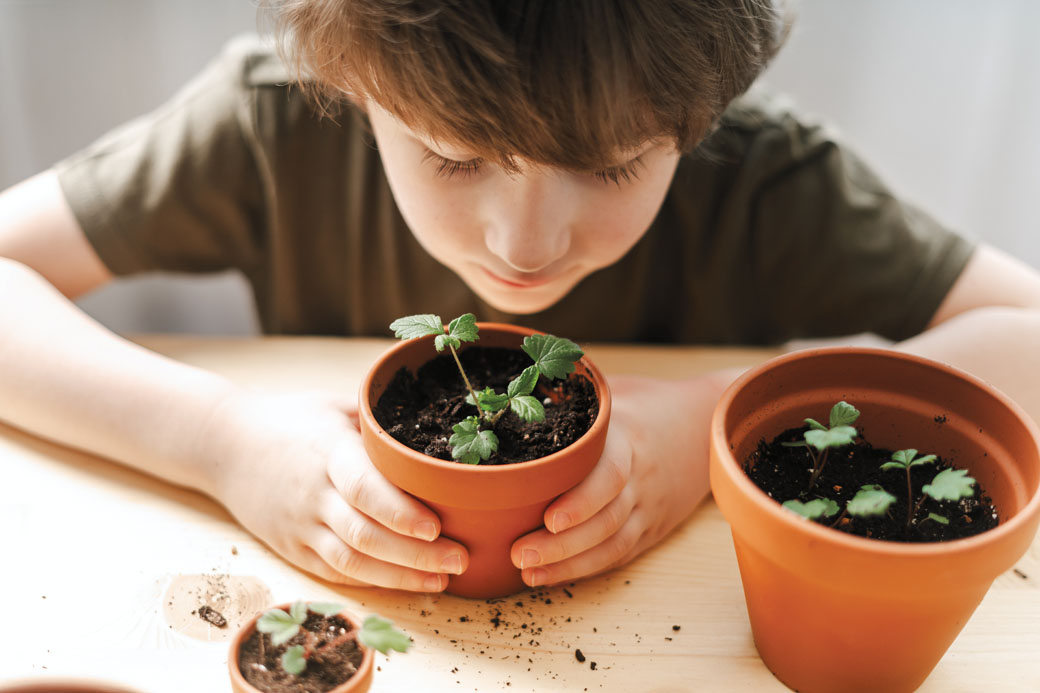The Power of Strawberries
Strawberries taste great in early summer, but did you know they can also be cultural ambassadors that build bridges between communities? Staff members at the BC Agriculture in the Classroom Foundation (BCAITC), a non- profit organization that works with educators to bring B.C. agriculture and food education to students throughout the province, thought they might be — and they were right.
BCAITC’s latest initiative — titled Common Ground: The Strawberry Project — pairs B.C.’s First Nations schools with others from across the province in a cultural exchange aimed at broadening the awareness of a local food source and incorporating Indigenous ways of learning and knowledge into the learning experience.
In January, 50 lucky classrooms across B.C. received a kit containing 20 ever-bearing strawberry bare root plants, 10 wild strawberry plugs, 30 pots, funds for soil and a teacher’s handbook.
Amy Keryluik, BCAITC’s program co-ordinator, said an overwhelming 787 classrooms expressed interest in the project. Fen Hsiao’s, grade 1 class at Alexander Robinson Elementary in Maple Ridge was partnered with Seabird Island Community School on Stó:lō territory in Agassiz. The Indigenous learning perspective is one of the reasons she signed up for the project. A big part of the grade 1 curriculum, she says, is learning about the similarities and differences between communities.
Strawberries are the perfect conduit for this. Part of the rose family, strawberries grow wild in the temperate coastal and woodland areas of North and South America. Indigenous populations have traditionally harvested the berry as a fresh food source or used it as a part of a medicinal tea to soothe sore throats. During the first wave of European settlement in the 17th century, plants from both continents were sent to Europe. Planted together, the two species cross-pollinated to produce a larger fruit that’s now the ubiquitous ever-bearing strawberry grown in farmers’ fields and sold at our markets.
Since planting their strawberries, the paired classes have shared this history and growing experiences through pen-pal exchanges, video calls and links. Comparing the wild berry, still prevalent throughout B.C., to that of the ever-bearing plant, science and math classes have used graphs and charts to track their growth cycles, noting water use and light needs.
Teaching plans have been designed with input from B.C.’s First Nations Education Steering Committee (FNESC), which promotes quality education for all First Nations learners throughout B.C. Indigenous ways of learning take a holistic approach to education, highlighting family, community, land, spirits and ancestors. Through storytelling, a sense of self and connection to the land is enhanced.
To Indigenous peoples, the strawberry represents peace and forgiveness and is often referred to as the heart berry because of its shape. As the classroom plants continue to grow, teachers have shared stories about strawberries, including that of Chris Kelly, whose ancestral name is Spéshelewét. An Indigenous support worker and First Nations Métis woman and part of the Stó:lō Nation, Kelly’s story is part of the curriculum. As a girl, she remembered getting up very early to pick strawberries because her grandma said they’d be bigger in the mornings. She didn’t understand why until she was older. The valley where she lived pulled ocean air in at night and, in the morning, the resultant dew made the strawberries plump and juicy. But the sun and afternoon winds from the mountains dried the berries, making them smaller. The more juice in the berry, the better they tasted.
Learning how characters, climax, theme and point of view create a narrative, teachers remind students that storytelling teaches about self and others and helps everyone understand feelings. Teachers also ask students to write their own stories about strawberries, incorporating the role of the peace and forgiveness berry into the narrative.
The students then write their own stories about friendship and forgiveness, incorporating the strawberry as a central theme. Teachers guide students through the process by describing how when someone hurts us, we don’t have to forget about it, but by letting go of the anger and sadness it has caused us allows our hearts to feel better and sometimes heals the hearts of those who maybe didn’t understand they were causing hurt.
As the school year draws to a close, the strawberries are finally ready for harvest. Food is a centre of celebration, festival and community for B.C.’s Indigenous people. The symbolism of strawberries as a fruit of reconciliation inspires connection to family and community and, in this case, a virtual feast between the paired classes. Dividing into small groups, the students prepare bannock and berries while virtually connecting to their new friends.
Hsiao says growing food makes students happy. They chat excitedly about what they’re seeing and feeling with their hands. They help each other with tasks. They share personal connections to how they’ve experienced the foods in their lives. They talk about other plants and food that they have grown.
The seeds of a strawberry are on the outside of the fruit, not hidden away in the centre like an apple or peach. Keryluik hopes students have not only learned about a valued food source, but that seeds have been planted that encourage conversation outside the classroom about what strawberries represent.
B.C. Agriculture in the Classroom Foundation
202-2313 West Railway St., Abbotsford, B.C.
1.866.517.6225 | bcaitc.ca | @bcaitc





